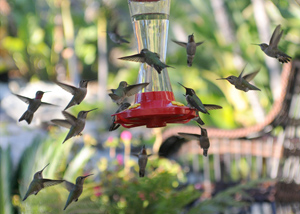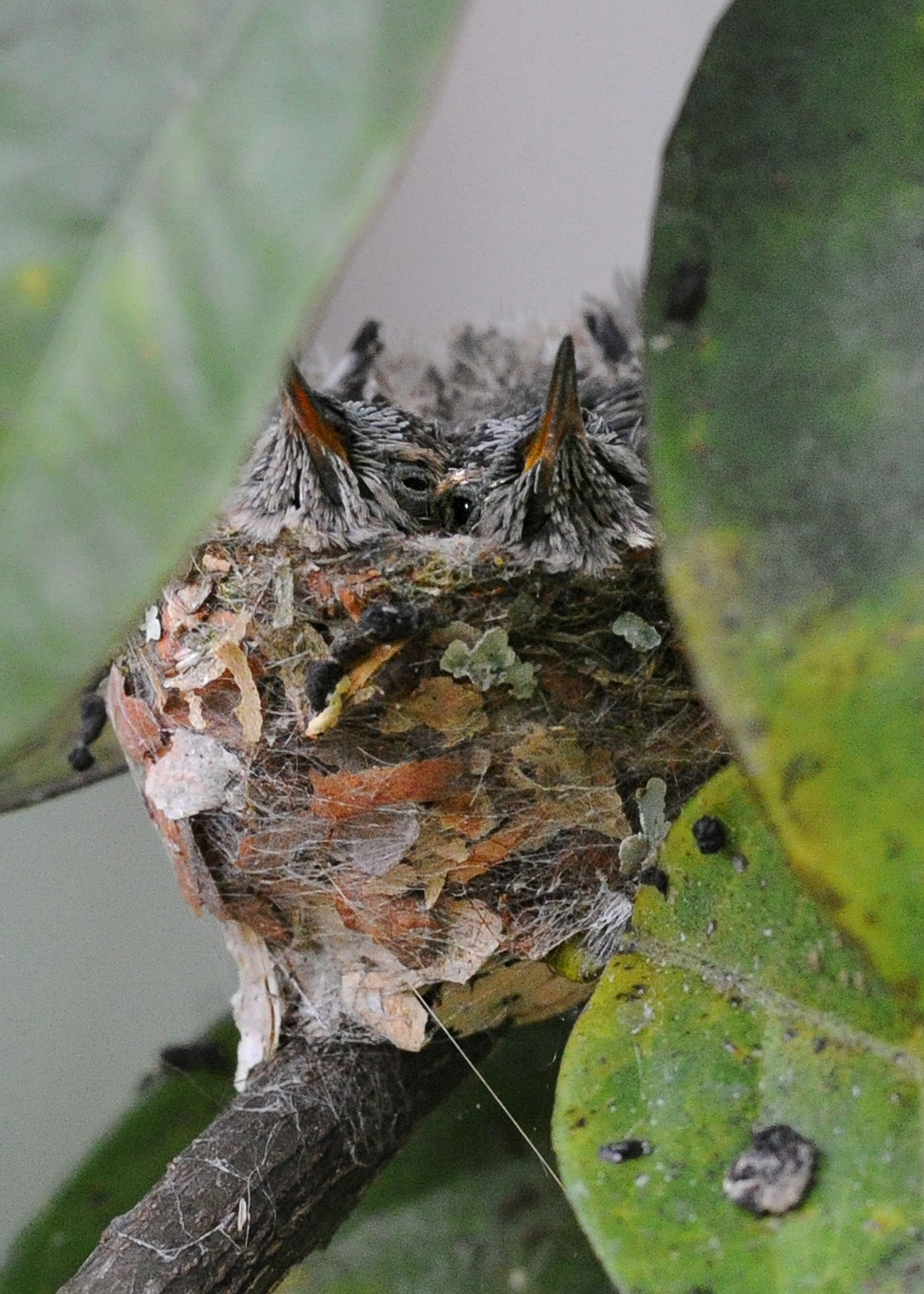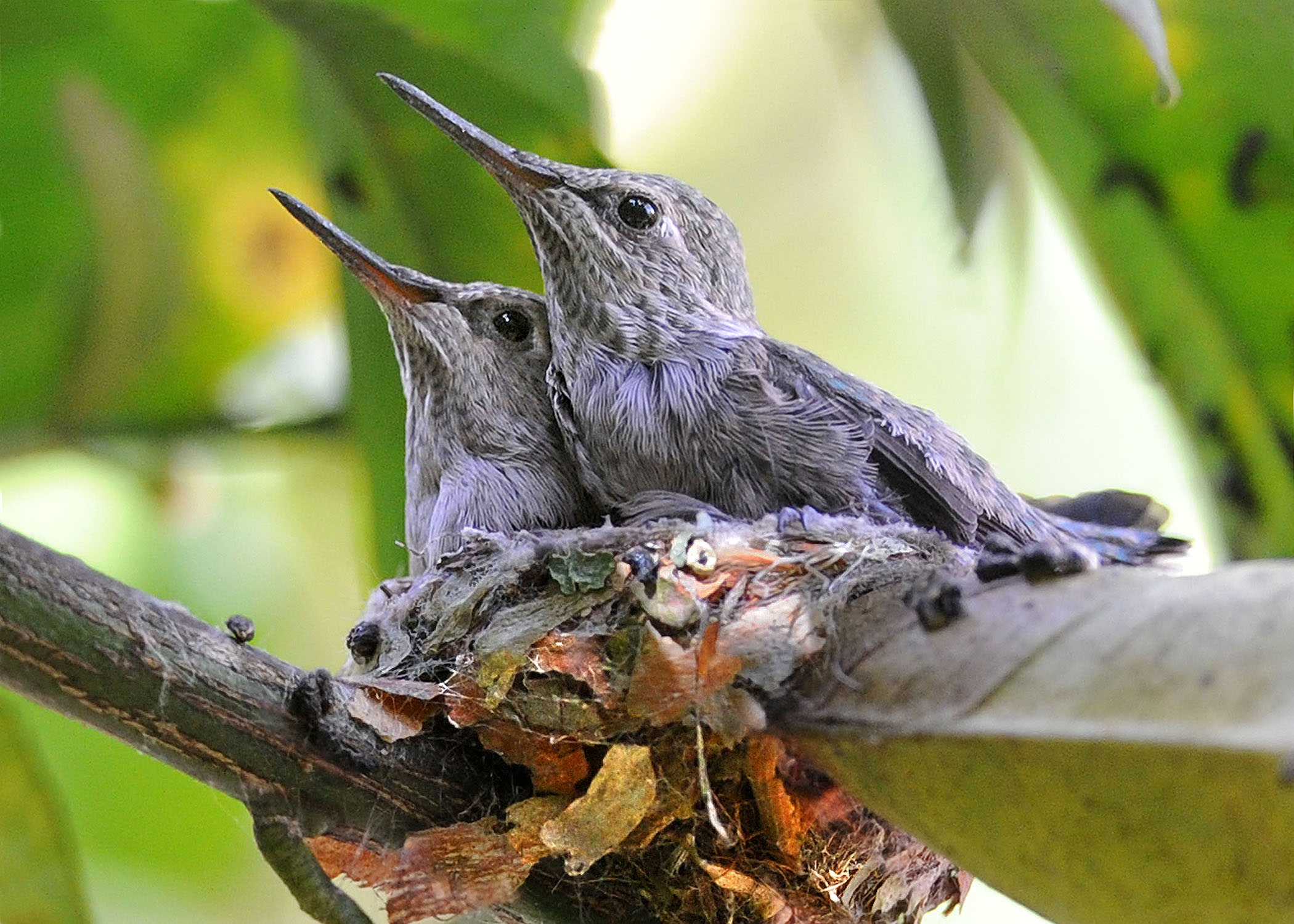
Photography by Ernie Anderson
Feeding hummingbirds is a very enjoyable way to observe one of the smallest of the birds in the bird kingdom (their brains proportionately the largest). Fondly called "flying jewels of the sky", these feisty, miniature, iridescent feathered marvels of nature have energy requirements that are gargantuan. More maneuverable than a helicopter, they are suspected of reaching at least 50 miles per hour under full power but to do it they must consume about 50 percent of their weight in nectar every day.
A hummingbird's diet includes insects (for protein and fat), as well as the necessary nectar produced by tubular flowers. Many people mistakenly think that because a hummingbird goes to flowers other than those with tubular flower, that they are drinking nectar. They are not, but are probably taking a sip of morning dew from a morning glory or satisfying their protein diet of insects at a zinnia. Red is not a color a hummingbird is instinctively attracted to. It simply learns while feeding that red tubular flowers contain more nectar than other colored flowers. So trained do they become to red that coloring is necessary in an artificial feeder with red on the top or bottom. It's best to leave it out, though, to avoid the controversy about its harmful effects to the birds. Nectar is found in other color tubular flowers and the birds do go to them for nectar.
Because so many of the native plants that provide the nectar for the migrating birds have been destroyed by development, human have helped these fascinating little birds a lot by providing feeders. Only those hummers who can meet their energy requirements survive. Biologist say a homemade sugar/water syrup most nearly approximates natural flowers nectar. In nature, flower nectar contains between 21-25% sucrose, the same ingredient as white table sugar; so about 1/4th of natural nectar is sugar.

Easy Hummingbird Nectar
- Dissolve one part sugar and four parts warm water (that's total of 5 parts) in a glass container
- Bring to boil in a pot or in the microwave
- Cool
- Fill feeder with only the amount you think they will use for a few days
The remainder of the solution may be kept several weeks in the refrigerator.
No SUBSTITUTES, please! A honey mixture is likely to be fatal. Non-caloric sweeteners will fool the birds buth with their energy reserves soon expended, starvation quickly ensures. No protein additives are advised (such as are sometimes provided in commercial mixes). . . gnats and other insects snatched in mid-air take care of any protein requirement for birds. NO RED FOOD COLORING is necessary and is probably harmful to their health. Most all feeders have red on them and that is enough to attract the birds. If your does not have red, then circle the opening with red fingernail polish.
Boiling the water isnot absolutely necessary, but it retards mildew growth and fermentation. NECTAR MUST BE CHANGED FREQUENTLY. . . every 3-4 days in the heat of the summer. If you are not willing to make a committment to keep the syrup fresh, plant red tubular flowers in your yard instead! Wash feeders scrupulously, rinse with a weak solution of bleach or vinegar and water ( to kill mildew spores that are harmful to the respiratory systems of the hummers) and then rinse again thoroughly before refilling.
These feisty little beggers will be choosers. Once they've staked a claim, they'll defend a feeder with zeal. If this offends your sensibilities, put up two or three stations spaced 4 to 5 feet apart. No matter how territorial any individual might be, he'll be unable to monopolize the multiple feeders. You'll have more birds and witness some razzle-dazzle miniaturized aerial displays that would make the Blue Angels blush!
